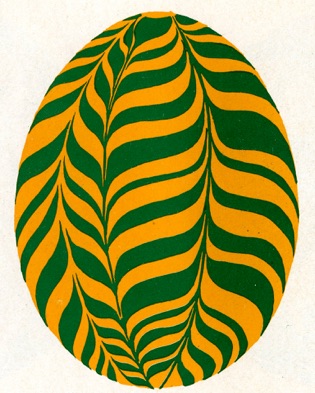Ceramic Eggs

The oldest Ukrainian pysanky in existence date back to the XII-XIII centuries, and are ceramic ones. Because of the fragility and perishable nature of eggs, only the ceramic majolica-glazed eggs of Kyivan Rus have survived up to today. Archeologists have found these ancient eggs not only in the territory of Middle Podniprovya (near the Dnipro River), but also in Western Ukraine. Some seventy exemplars have been discovered to date.
Apparently, there was a flourishing ceramic tile and pysanka business in Kyivan Rus (1000-1200 CE); these tiles and pysanky were exported to Poland, and to several Scandinavian and Baltic countries. The pysanky have been found in many sites, and fragments have been discovered in the graves of both children and adults.

The pysanky were fashioned from pink and red clays using the spiral method, and then smoothed by hand. They were made to be slightly smaller than real (chicken) eggs–about 2.5 by 4 cm. An opening was left at the larger end, so that a handle could be inserted, and used to place the pysanka into and remove it from the kiln. (Small pebbles were sometimes later placed in this hole, making the pysanka rattle when it moved.)
After firing, glazes were applied, and it was fired again, producing a pysanka with a green or brown background, and designs of yellow or green. (See illustrations above, taken from Binyashevsky and Manko.)
These are essentially the same colors used in traditional Hutsul ceramics today (as can be seen in the Hutsul ceramic pysanky below).
Ukrainians still make ceramic eggs of all sorts, in a variety of colors, sizes and patterns Below are some traditional and modern examples.

Back to MAIN Pysanka Variations page
Back to MAIN Pysanka home page.
Back to Pysanka Index.
Search my site with Google



